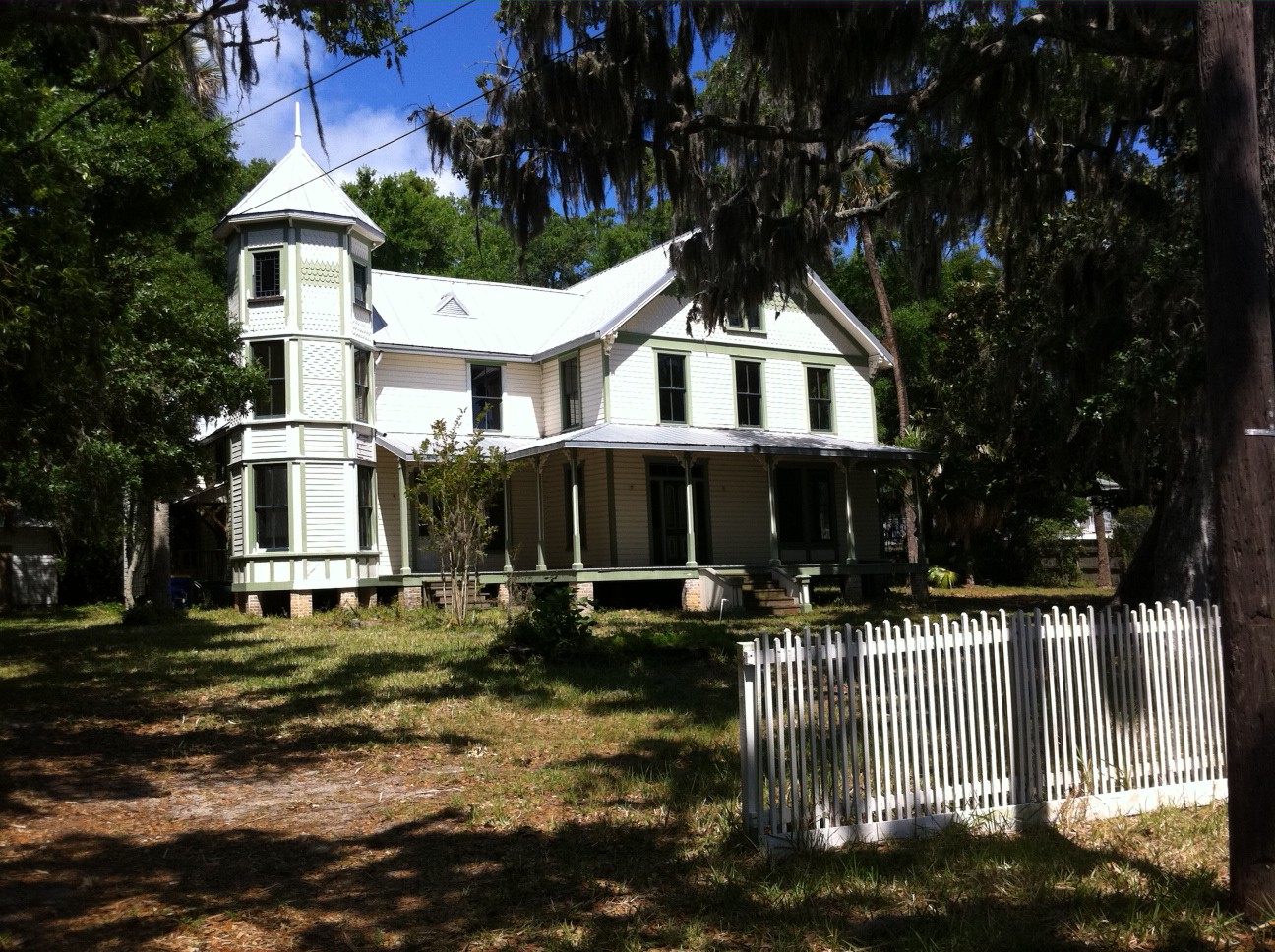The Past is Prologue
BY LESA.LORUSSO ON MAY 7, 2012 IN SUSTAINABILITY
Historic Home on Rockledge Drive, Rockledge, FL. Photo by Lesa Lorusso
Shakespeare’s phrase “The Past is Prologue” is often used by historic preservationists to communicate the concept of history influencing the present by setting its context. This phrase challenges us to base our plans for future growth on our past, to look at how our society has evolved historically and to have the past serve as a guide for the future to ensure sustainability. While sustainability for the built environment is defined as an initiative that “meets the needs of the present without compromising the ability of future generations to meet their own needs” (World Commission on Environment and Development, 1987, p. 43), green design is defined by the Green Design Education Initiative (2003) as a principle that “implies an interest in design that protects people’s health and well-being.” Therefore, as illustrated by the definitions provided, sustainable design refers to the health, safety, and welfare of the planet while green design is often used to refer to people’s health, safety, and welfare (Jones, pg. 3). Both terms are closely related to the core of historic preservation.
In fact, what better way is there to reduce, reuse and recycle than to preserve an existing building? As designers seek to further the cause for sustainability in architecture, it seems that we are often looking back to the way buildings were built in the past for instruction. The beautiful homes located on Rockledge Drive in Brevard County’s Rockledge, FL are elegant examples of sustainable architecture. Located on the banks of the intercoastal Indian River, within walking distance from the headquarters of the Florida Historic Society, these homes serve as sentinels of a past era of inherently sustainable architecture. With elements that include the use of naturally termite impervious heart of pine wood, wrap-around porches, central breezeways and careful site positioning, these buildings demonstrate the effectiveness of sustainable design from eras that viewed sustainability as common sense, not merely a marketing tag line.
While the concept of limitless resources seemed true in the 18th and 19th centuries, it is definitely not the case any more. Americans today are awakening to a very different reality. The truth is that now most of the habitable American landscape has been cultivated or built upon and communities are approaching a “closed to development” status. So now what? Now we are forced to look around and figure out ways to effectively use the resources that we have, which includes building materials and natural energy sources alike. With the cost of building materials at historically astronomical prices, it is often more cost efficient to utilize an existing building and retrofit the structure for a new purpose than it is to raze the building and purchase all new materials. (Ligibel, Tyler)
Historic preservationists in America are illustrating Shakespeare’s popular phrase in the literal sense by looking to the building practices of the past to learn how to better build homes today. A scenic trip down Brevard County’s Rockledge Drive will give a history lover and sustainable enthusiast a visual abundance of historic homes, some catalogued by the National Trust for Historic Preservation and some not, which illustrate sustainable building methods from long ago.
Works Cited:
- Green Design Education Initiative. (n.d.). Green/Sustainable design: Frequently asked questions. www.idec.org/greendesign/FAQ.html
- Louise Jones, Arch.D. Eastern Michigan University, Implications Newsletter Vol 01.06 (n.d.).
- Lorusso, Lesa. “IND2150 Ch1 Powerpoint Notes,” Why Preservation Course IND2150. Brevard Community College, Melbourne, FL
- Ligibel, Ted, Tyler, Ilene, Tyler, Norman. Historic Preservation: An Introduction to Its History, Principles, and Practice (Second Edition). W. W. Norton & Company; (February 4, 2009).
- World Commission on Environment and Development. (1987). The Brundtland report: Our common future. Oxford: Oxford University Press. UN Documents. NGO Committee on Education. <http://www.un-documents.net/index.htm>.
